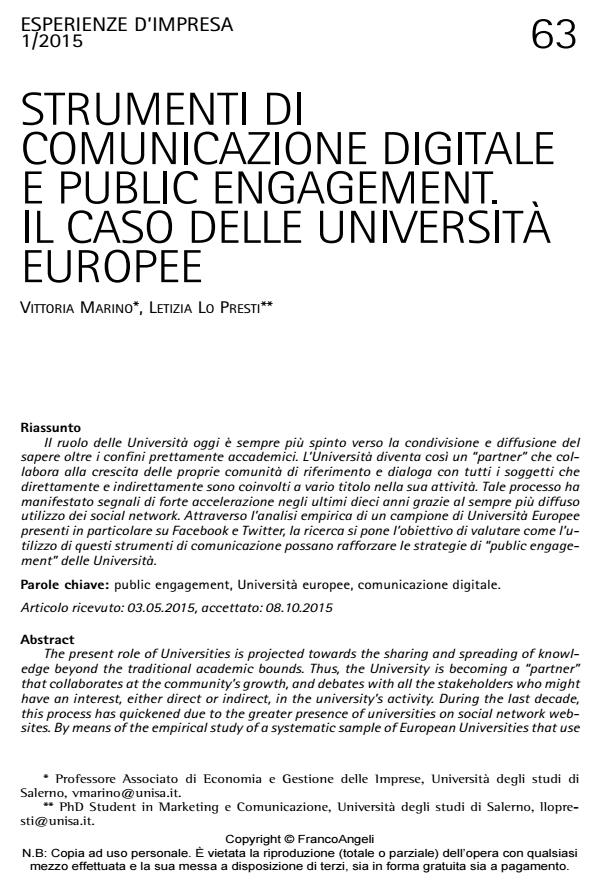Strumenti di comunicazione digitale e public engagement. Il caso delle università europee
Journal title ESPERIENZE D'IMPRESA
Author/s Vittoria Marino, Letizia Lo Presti
Publishing Year 2016 Issue 2015/1
Language Italian Pages 15 P. 63-77 File size 573 KB
DOI 10.3280/EI2015-001003
DOI is like a bar code for intellectual property: to have more infomation
click here
Below, you can see the article first page
If you want to buy this article in PDF format, you can do it, following the instructions to buy download credits

FrancoAngeli is member of Publishers International Linking Association, Inc (PILA), a not-for-profit association which run the CrossRef service enabling links to and from online scholarly content.
The present role of Universities is projected towards the sharing and spreading of knowledge beyond the traditional academic bounds. Thus, the University is becoming a "partner" that collaborates at the community’s growth, and debates with all the stakeholders who might have an interest, either direct or indirect, in the university’s activity. During the last decade, this process has quickened due to the greater presence of universities on social network websites. By means of the empirical study of a systematic sample of European Universities that use Facebook and Twitter, this work evaluates how these communication tools could reinforce the Universities’ "public engagement" strategies.
Keywords: Public engagement, European Universities, digital communication
- Social Network e Stakeholder Engagement, un binomio tutto da sviluppare? Un confronto tra le università pubbliche di Italia e Cina Elena Gori, Silvia Fissi, Michele Fiumanò, in MANAGEMENT CONTROL 1/2018 pp.95
DOI: 10.3280/MACO2018-001005
Vittoria Marino, Letizia Lo Presti, Strumenti di comunicazione digitale e public engagement. Il caso delle università europee in "ESPERIENZE D'IMPRESA" 1/2015, pp 63-77, DOI: 10.3280/EI2015-001003